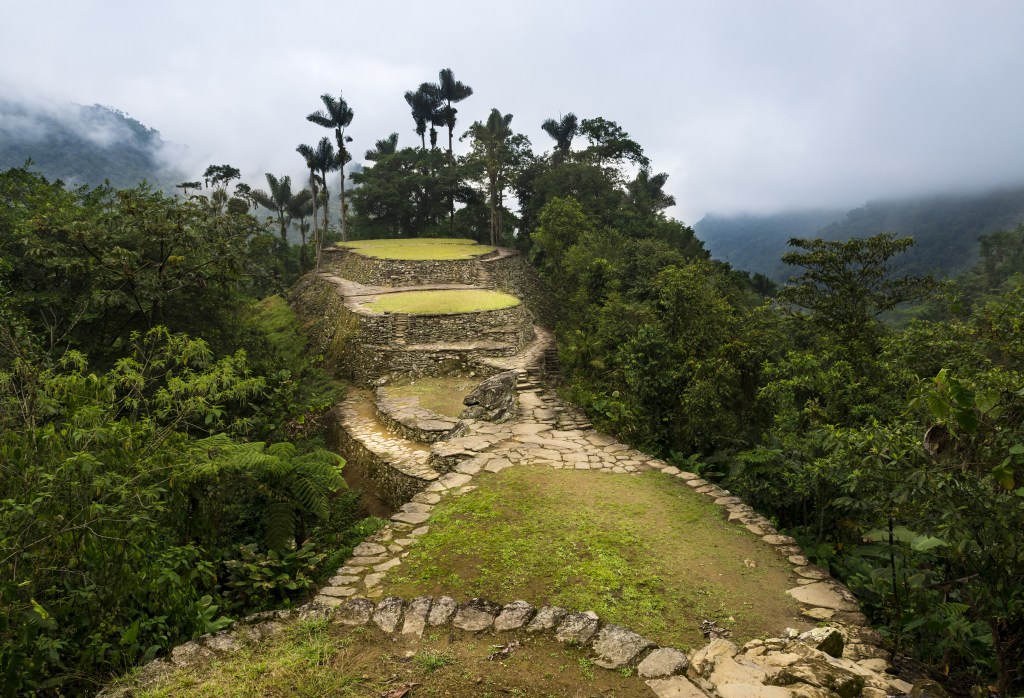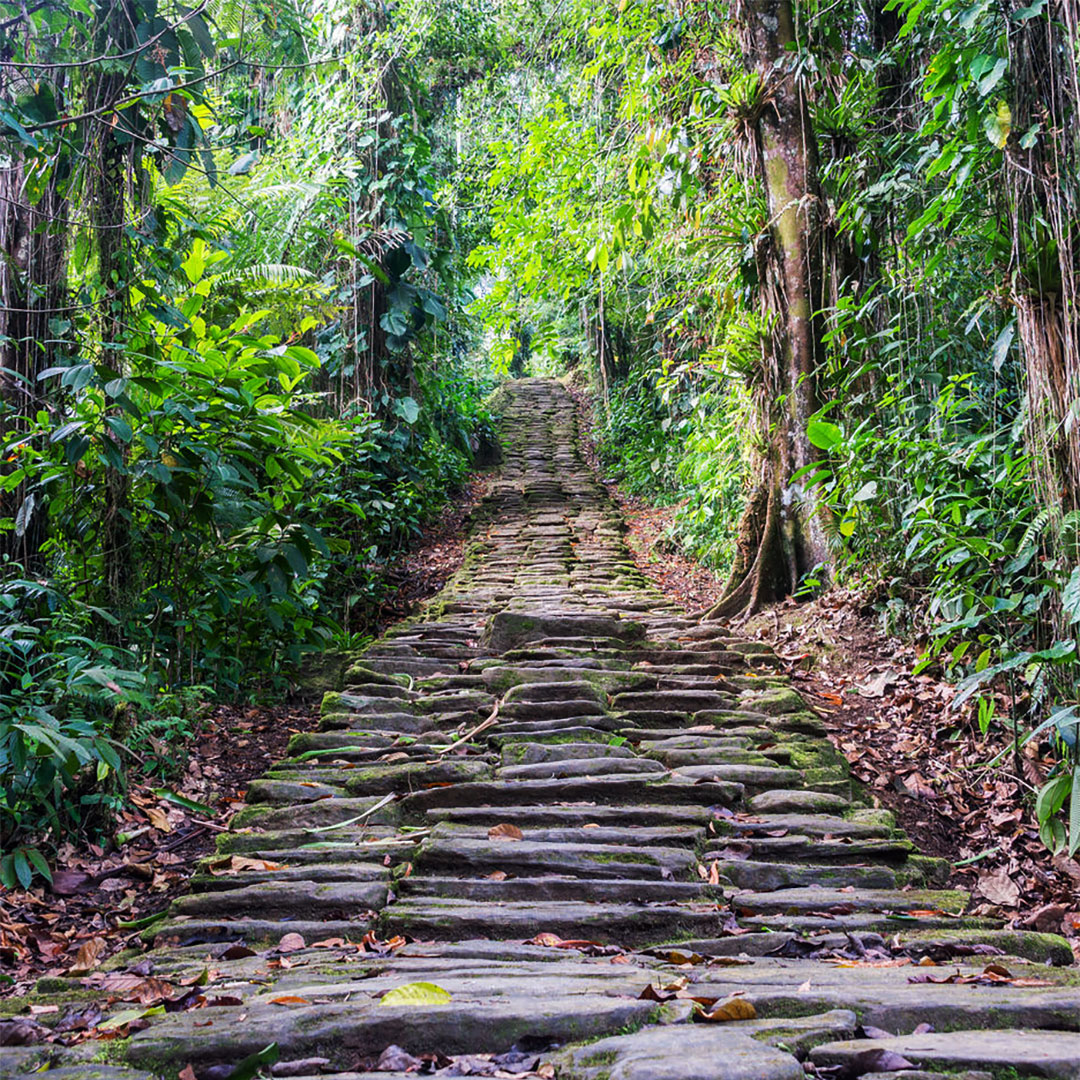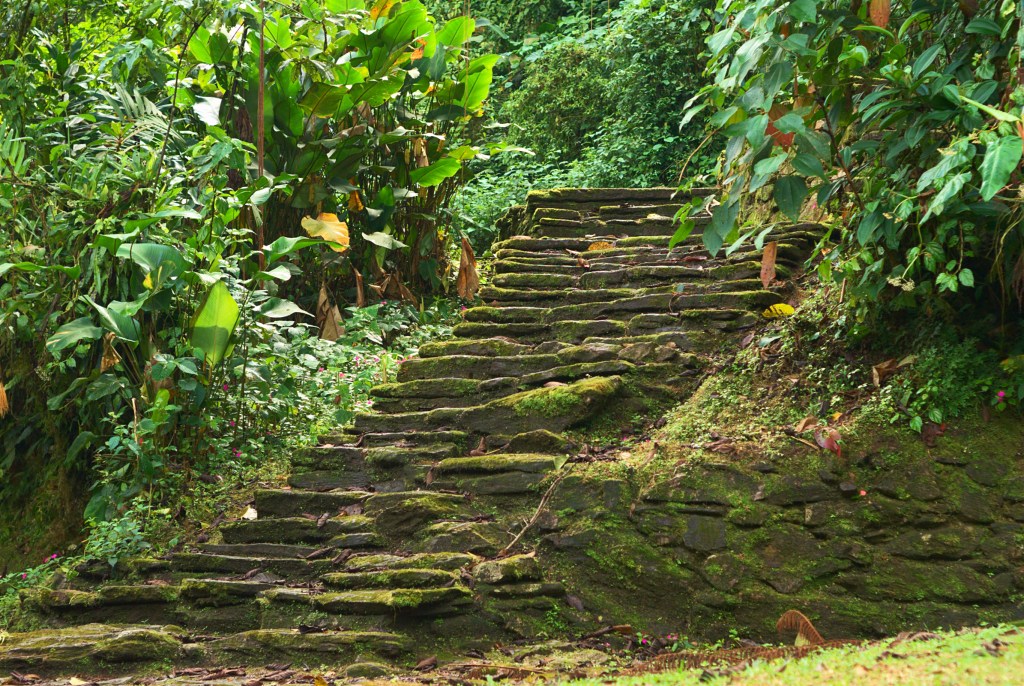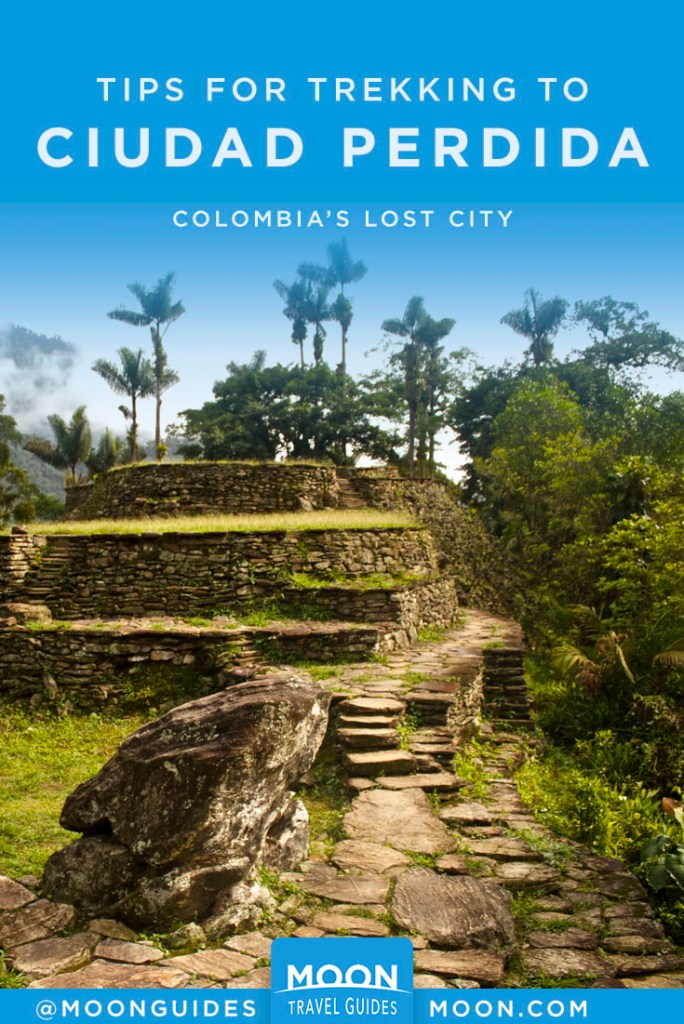The Ciudad Perdida Trek in Colombia’s Sierra Nevada
A highlight for many visitors to Colombia is the four- to six-day, 52-kilometer (32-mile) round-trip trek to the Ciudad Perdida (Lost City) in the Sierra Nevada mountains of the Caribbean coast. The Ciudad Perdida is within the confines of the Parque Nacional Natural Sierra Nevada de Santa Marta.
The Ciudad Perdida, called Teyuna by local indigenous tribes and Buritaca 200 by archaeologists, was a settlement of the Tayrona, forebears of the people who inhabit the Sierra Nevada today. It was probably built starting around AD 700, at least 600 years before Machu Picchu. There is some disagreement as to when it was abandoned: There is evidence of human settlement until the 16th century. The site was visited in the early 1970s by guaqueros (treasure hunters) who pillaged the site. News of its discovery in 1976 marked one of the most important archaeological events of recent years. From 1976 to 1982, archaeologists from the Colombian National Institute of History and Anthropology painstakingly restored the site.

Spread over some 35 hectares (86 acres), the settlement consists of 169 circular terraces atop a mountain in the middle of dense cloud forest. Archaeologists believe that this sophisticated terrace system was created in part to control the flow of water in this area known for torrential rainfall for much of the year.
Plazas, temples, and dwellings for tribal leaders were built on the terraces in addition to an estimated 1,000 bohíos (traditional thatched roof huts), which housed between 1,400 and 3,000 people. A fire was always at the center of the bohío, and there was a domestic area where food and water were stored and cooking took place, as well as an artisan area for goldsmithing.
Surrounding the Ciudad Perdida were farms of coca, tobacco, pumpkin, and fruit trees. The city was connected to other settlements via an intricate system of mostly stone paths. The hike is, by and large, uphill, as you reach an elevation of 1,100 meters (3,600 feet). There are nearly 20 river crossings to be made. Towards the end of the third day, you will climb about 1,200 often treacherously slippery stone steps until you reach the spectacular terraces of Ciudad Perdida. For many this sight makes all the sweat, fatigue, and mosquito bites worthwhile.

There is one set fee (COP$600,000) for the trek. This does not change, no matter if you’re making the trek in three, four, or five days. If you are in very good shape and prefer taking the Ciudad Perdida express route, the trek can be done in three nights and four days. This requires six hours hiking per day and rising early. For some, the long nights of card playing at campsites can get old quick; others enjoy the camaraderie with hikers from all over the world. In case of an emergency on the mountain, a burro or helicopter will be sent to retrieve the hiker, for a fee.
It’s important to only go with a reputable tour company, such as Magic Tour (Cl. 16 No. 4-41, Santa Marta, tel. 5/421-5820; Cl. 14 No. 1B-50, Taganga, tel. 5/421-9429) or TurCol (Cl. 13 No. 3-13, Centro Comercial San Francisco Plaza, Local 115, Santa Marta; Cl. 19 No. 5-40, Taganga, tel. 5/421-2556). A third option is Baquianos Tour (Cl. 10C No. 1C-59, Santa Marta, tel. 5/431-9667). Your tour company will provide food (advise in advance if you have special dietary needs or wants), hammocks or cots with mosquito netting, and mules to carry up supplies.
You’ll need to bring a small to medium-sized backpack, enough to carry a few days of clothes, good hiking boots with strong ankle support, sandals for stream crossings (keeping your boots dry), long pants, mosquito repellent, water purifying tablets, sunscreen, cash for refreshments to purchase along the way, a small towel, toilet paper, hand sanitizer, flashlight, sealable bags to keep things dry, light rain jacket, and a water container. If you have them, trekking poles may be a nice addition. Sleeping bags may provide more comfort at night but aren’t necessary.

From mid-December through mid-January you’ll have plenty of company along the way: It’s high tourist season. Other high seasons are during Semana Santa and June-July. The wettest months tend to be April-May and September-November. Expect a daily downpour and doable, but sometimes rather treacherous, river crossings during those times of the year. When it’s raining or has been raining, the trek is more challenging. On the plus side, there are usually fewer crowds on the mountain at that time.
Campsites along the way turn into backpacker villages during high seasons, but they never turn in to rowdy scenes by any means. Upon arrival the routine is fairly standard. You’ll often be able to cool off in the pristine waters of nearby swimming holes, have dinner, and hit the hammocks. Sleeping in hammocks can be uncomfortable for those not used to them. Earplugs come in handy for light sleepers.
The trek begins at the settlement of Mamey on the Río Buritaca. Along the way you will no doubt come in contact with Kogi people who live in the Sierra Nevada, and will pass through the village of Mutanyi. These lands are theirs and visitors are encouraged to refrain from taking photographs of them without prior permission. One of the most popular tourist activities in Colombia, the trek is considered quite safe.
Related Travel Guide
Pin it for Later

